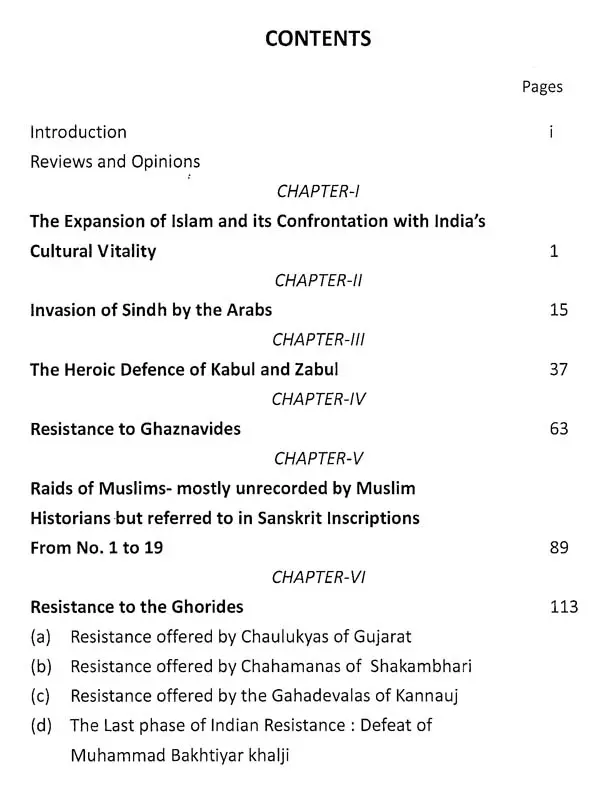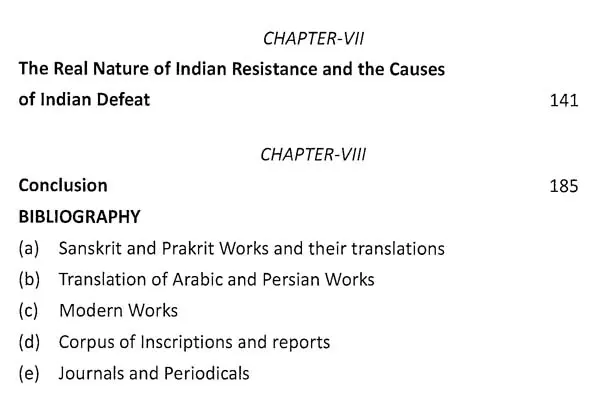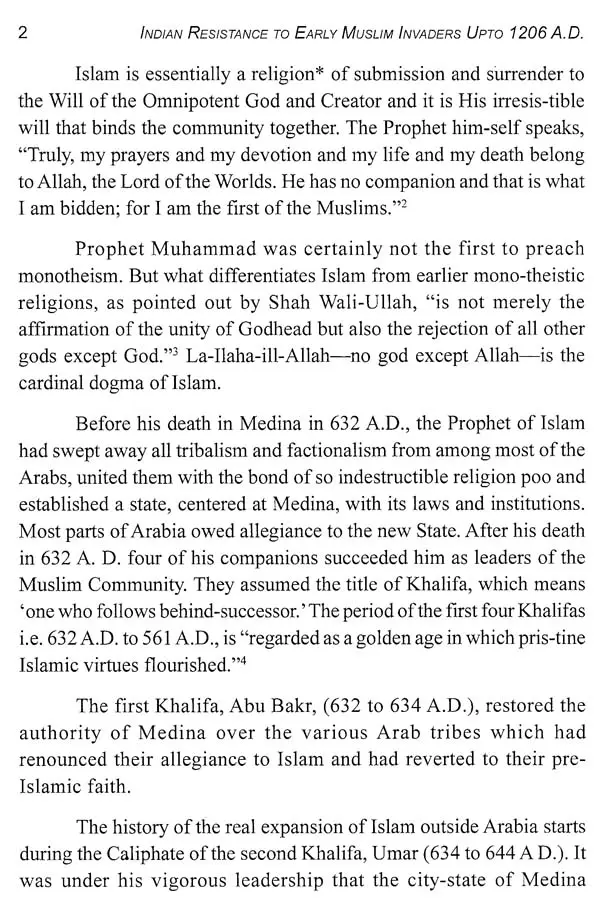
Indian Resistance to Early Muslim Indavers-Upto 1206 A. D.
Book Specification
| Item Code: | UAK977 |
| Author: | Ram Gopal Mishra |
| Publisher: | Anu Books, Meerut |
| Language: | English |
| Edition: | 2021 |
| ISBN: | 9788193608883 |
| Pages: | 196 |
| Cover: | PAPERBACK |
| Other Details | 9.00 X 6.00 inch |
| Weight | 330 gm |
Book Description
The present work is an attempt to provide a connected account of the prolonged and sustained efforts made by the Indians to stem the tide of early Muslim invaders. The political and military resistance was spread over more than five and a half centuries till its final collapse in northern India in last decade of the 12th century A.D. For long, the historiens of India have emphasized merely the ultimate collapse of the Indians, ignoring completely the earlier resistance offered by them. It is a fact of history that such sustained resistance as encountered by the Muslim arms in India was not faced by them in any other land conquered by them. If the present work helps to correct the imbalance even in a small measure, shall feel my labour is sufficiently rewarded.
The Indian resistance had another facet, which was the outcome of the resolute determination of the Indians to preserve their religious and cultural identity. While country, after country from the straits of Gibralter to the banks of the Indus, witnessed the repid Islamization of their individual cultures, even northern India managed to survive as a predominantly 'heathen' land even after five centuries of Muslim rule. Mine is an humble attempt to explain this seeming paradox of the indestructibility of India's cultural vitality and the social or moral degeneration of the Indian society on the eve of Muslim invasion. The historians have merely emphasized the latter part of this seeming paradox.
From the very dawn of history, India has been known as the land of plenty. Its fertile valleys and plains of the North have held the lure for foreign invaders to conquer and very often to settle down here permanently. Through its mountain passes of the North-West, the Khyber and the Bolan, have come wave after wave of foreign invaders, eager to displace the previous settler from the fertile lands of modern Punjab and the Indo-Gangetic plains. The ever-present danger of these invasions inculcated among the Indians, a fierce spirit of resistance to the invader, an aspect which has not been duly stressed by the historians.
If we provisionally accept the Dravidians as the earliest inhabitants of India, the Aryans were the first known foreign invaders of India. The hymns of the Rig-Veda, the earliest historical document of the Indo-Aryans, contain sufficient evidence of their fierce and protracted struggle with the Dravidians. Again and again, The hymns invoke the help of their war-God, Indra, who is called 'Purandara' or the 'destroyer of forts' to destroy the fortified settlements of their enemies Hari -yupia (was it Harappa ?) was the scene of one such battle. Similarly, Divodasa is said to have destroyed several forts belonging to the Dravidian king. Sambara, with the help of Indra.
**Contents and Sample Pages**












